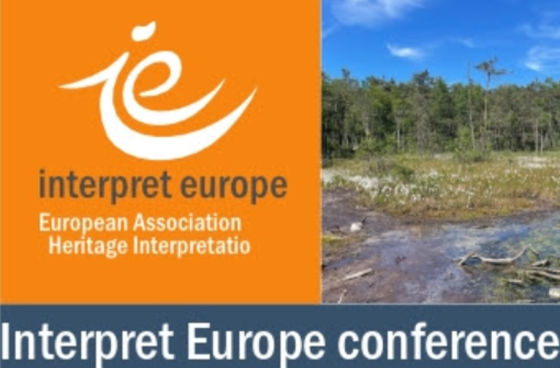Interpret Europe Conference 2025
Kind of Event
- Conference
Country
- Poland
Heroes, anti-heroes and villains: How we (re)create, use and dismantle them.
Join us between 11 and 14 April 2025 for the Interpret Europe conference entitled Heroes, anti-heroes and villains: How we (re)create, use and dismantle them.
We all have our ‘heroes’, personally or as a community. In common understanding, ‘heroes’ are significant people, or animals, that have done something brave, new or good. Whether it's a popular person or a group of silent heroes – there are always stories to tell. And this points to the second meaning of ‘hero’: in fiction, poetry and films, ‘heroes’ are the protagonists, the main characters of a captivating story. Both meanings of ‘hero’ may overlap; both matter for interpreters of natural and cultural heritage.
Interpreters seek stories that trigger meanings beyond mere facts. Sometimes, a fictional character who engages with the heritage is used to create an interpretive story. Such idealised creations allow us to condense historical, socio-cultural or ecological knowledge and arrange it into a sequence of events which resonate with universal values. Fictional ‘heroes’ typically face up to an adverse environment or antagonists who represent another set of values. This technique helps people to relate more easily to the heritage but it may also raise questions: do interpreters who invent 'heroes' or & 'villains' risk perpetuating clichés and stereotypes, and would this always be problematic?
Historical people are considered 'heroes' because they symbolise particular community values which may change over time. Traditional stories about established ‘heroes’ frequently convey an idealised image by highlighting certain traits while omitting others. Should heritage interpretation challenge collective stereotypes by confronting clichés with counter- evidence and reinterpret the heroes of the past? Should interpreters spearhead the replacement of old ‘heroes’ by new ones who represent progressive values? Or, rather, should we deconstruct the entire concept of ‘heroes’ and create interpretive stories around anti-heroes, or even depersonalise our interpretations?
Our 2025 conference will be organised in partnership with the Józef Piłsudski Museum at Sulejówek in the outskirts of Warsaw. This is an ideal place to discuss the interpretation of ‘heroes’ and the depiction of their counterparts. Józef Piłsudski is one of Poland’s national heroes, one who fought for an independent republic and for freedom for the Polish people. But he is also an ambivalent character, admired and criticised by different factions of Polish society for different reasons. The museum aims for dialogue with its audience, respecting their diverse personalities and sometimes separate points of view.
Let’s explore and discuss the depiction of a national hero from a European and other national perspectives – and to reflect critically upon what the concepts of ‘hero’ and ‘heroisation’ mean for interpreters and communities in different parts of Europe.
Warsaw and its surrounding countryside offer other great opportunities to explore various aspects of the conference theme. There will be study visits to nature sites where we can discuss the pros and cons of creating an interpretive storyline by hero-protagonists such as individual animals or flagship species. The Marie Skłodowska Curie Museum is dedicated to an outstanding woman who transcended the limits of gender bias and national identity. Other sites keep the memory of unnamed heroes and ordinary people alive…
Make sure you join us in April 2025 at the IE conference under the stirring title of Heroes, anti-heroes and villains: How we (re)create, use and dismantle them!
It will offer an exciting programme created by colleagues from all over the world with speeches, workshops, presentations, study visits and much more.
We look forward to welcoming you to Poland!
Bettina Lehnes
IE Events Coordinator

